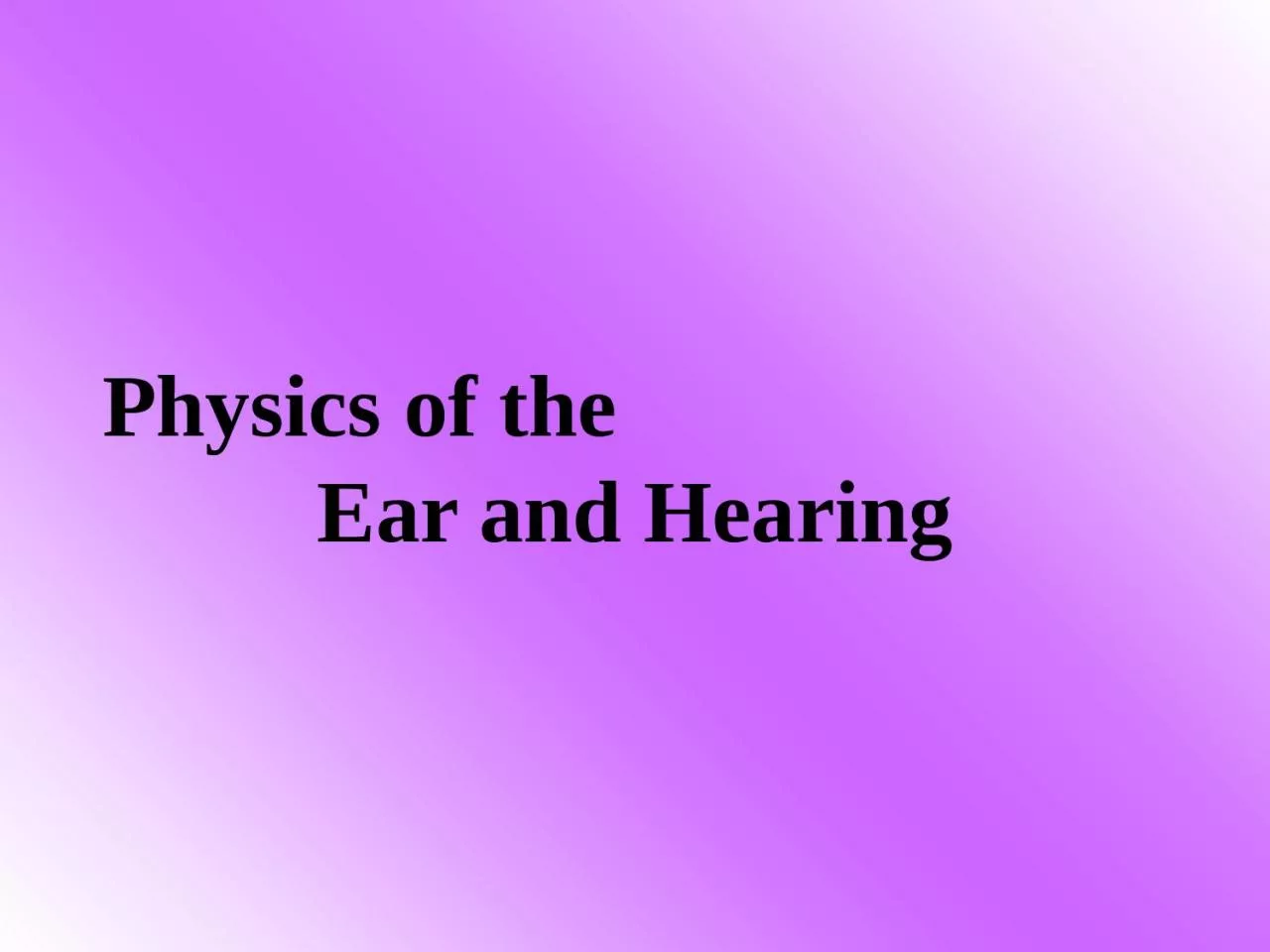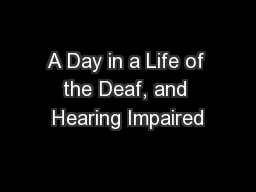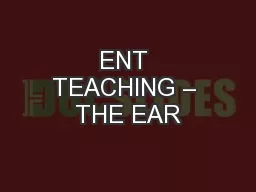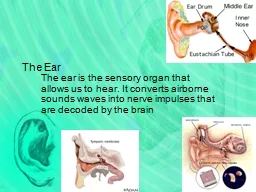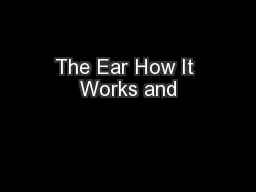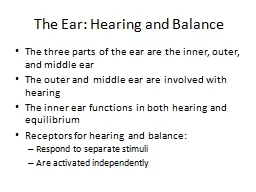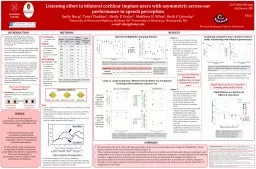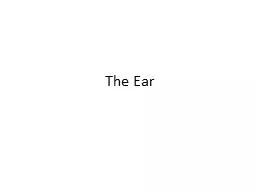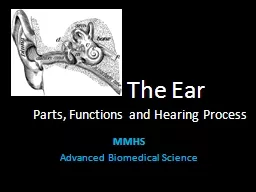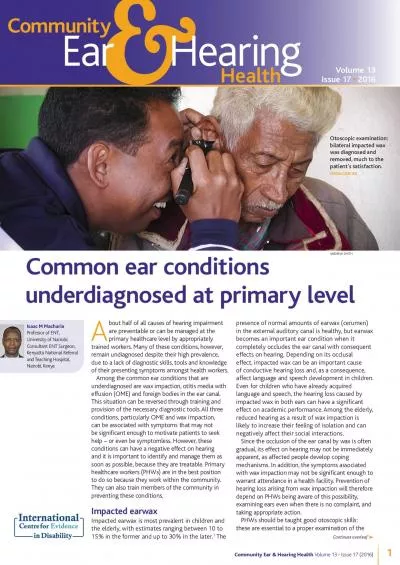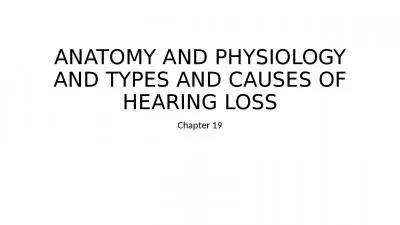PPT-Physics of the Ear and Hearing
Author : oryan | Published Date : 2022-06-18
Speech and hearing are the most important means by which we communicate with our fellow man Through hearing we receive speech sounds from others and also listen
Presentation Embed Code
Download Presentation
Download Presentation The PPT/PDF document "Physics of the ..." is the property of its rightful owner. Permission is granted to download and print the materials on this website for personal, non-commercial use only, and to display it on your personal computer provided you do not modify the materials and that you retain all copyright notices contained in the materials. By downloading content from our website, you accept the terms of this agreement.
Physics of the Ear and Hearing: Transcript
Download Rules Of Document
"Physics of the Ear and Hearing"The content belongs to its owner. You may download and print it for personal use, without modification, and keep all copyright notices. By downloading, you agree to these terms.
Related Documents

